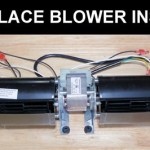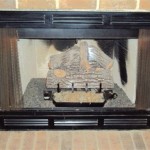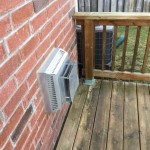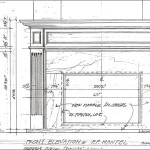Remote Fireplace Starter Troubleshooting
Remote-controlled fireplace starters offer convenience and ease of use, allowing ignition and control of gas fireplaces from a distance. However, like any electronic system, they can encounter operational issues. Troubleshooting a remote fireplace starter requires a systematic approach, starting with the simplest potential causes and progressing to more complex problems. This article provides a guide to diagnose and address common issues encountered with remote fireplace starters.
Battery Issues in the Remote and Receiver
The most frequent cause of a non-functioning remote fireplace starter is depleted or improperly installed batteries. The remote control itself and the receiver unit located within the fireplace both typically require batteries. Low battery power can weaken the signal strength, preventing the remote from effectively communicating with the receiver.
First, inspect the batteries in the remote control. Replace them with fresh batteries of the recommended type and voltage. Ensure the batteries are installed correctly, paying close attention to the polarity markings (+ and -). After replacing the batteries, test the remote's functionality. If the remote still fails to operate the fireplace, proceed to examine the batteries in the receiver unit.
The receiver unit is usually located near the gas valve or in a compartment within the fireplace. Accessing the receiver may require removing a panel or grate. Once accessible, inspect the batteries in the receiver, replacing them as needed with the correct type and ensuring proper polarity. Even if the batteries appear to have some charge, depleted batteries can cause inconsistent or unreliable operation. Using a multimeter to test the voltage of the batteries in both the remote and receiver can provide a more accurate assessment of their condition.
Some receiver units are powered by the incoming AC voltage (usually 120V). Confirm the receiver is receiving power. If it is not AC powered, then battery power is critical to ensure smooth operations. If an AC-powered unit is being used, verify the power outlet functionality using another device and address any electrical issues before proceeding.
Signal Interference and Range Limitations
Radio frequency (RF) interference can disrupt the communication between the remote and the receiver. Various electronic devices operating on similar frequencies can interfere with the remote's signal, preventing it from reaching the receiver effectively. Common sources of interference include cordless phones, wireless routers, microwave ovens, and other remote-controlled devices.
To mitigate signal interference, try moving the remote closer to the fireplace receiver. Reduced distance can overcome weaker signals or interference. Temporarily turn off or move any potential sources of interference in the vicinity of the fireplace. Testing the remote's functionality after each change can help identify the source of the interference.
The remote control also has a limited operating range. Exceeding this range can weaken the signal and prevent the remote from activating the fireplace. Consult the user manual for the specified operating range of the remote. Avoid attempting to operate the remote from excessive distances or through multiple walls. If successful operation is only achievable at close range, this could indicate a weak signal or the presence of significant interference.
Some receivers have an external antenna. Ensure that the antenna is extended and positioned for optimal signal reception. Avoid obstructions near the antenna that could further impair its effectiveness. Reorienting or repositioning the antenna may improve signal reception and enhance the remote's range.
Pilot Light and Gas Supply Issues
A consistent and sufficient gas supply is essential for a gas fireplace to operate correctly. A weak or extinguished pilot light, problems with the gas valve, or issues with the gas supply line can prevent the fireplace from igniting, even if the remote is functioning properly.
Verify that the pilot light is lit. If the pilot light is extinguished, follow the manufacturer's instructions to relight it. Most fireplaces have a clearly labeled procedure for relighting the pilot light, involving pressing and holding a button while simultaneously activating a spark igniter. If the pilot light repeatedly goes out, this could indicate a problem with the thermocouple or the gas supply.
Ensure that the main gas valve is fully open. Typically, the gas valve is located near the fireplace. Check that the valve is turned to the "on" position. If the gas valve is partially closed, it can restrict the gas flow, preventing the fireplace from igniting. Attempting to light the fireplace with the gas valve only partially open can create a dangerous situation. Do not attempt to bypass safety mechanisms or tamper with the gas valve.
Problems with the gas supply line can also prevent the fireplace from operating. Check for any kinks or obstructions in the gas line. If there are any suspected issues with the gas line, such as leaks or damage, immediately contact a qualified gas technician. Do not attempt to repair or modify the gas line yourself, as this can be extremely dangerous.
Receiver Unit Malfunctions and Wiring Problems
If the batteries are fresh, there is no apparent interference, and the gas supply is adequate, the problem may lie within the receiver unit itself. Malfunctions in the receiver's internal circuitry or wiring issues can prevent it from properly receiving the signal from the remote and activating the gas valve.
Carefully inspect the wiring connections to the receiver unit. Ensure that all wires are securely connected and that there are no loose connections or damaged wires. Disconnecting and reconnecting the wires can sometimes resolve minor connection issues. Refer to the wiring diagram in the user manual for the correct wiring configuration. Improper wiring can cause the receiver to malfunction or damage the fireplace system.
If the receiver unit shows signs of physical damage, such as burnt components or water damage, it may need to be replaced. Water damage can corrode the internal circuits. Burnt components can come from a power surge or overheating. Contacting a qualified technician for replacement is recommended, as proper installation and configuration are critical for safe and reliable operation.
Some receiver units have a reset button or a learn function for pairing with the remote. Consult the user manual for instructions on how to reset the receiver or re-pair it with the remote. This process can sometimes resolve communication issues between the remote and the receiver. Resetting or re-pairing will return the unit to its factory setting, clearing any previous connection and requiring that the controller be actively registered.
Thermocouple Issues
The thermocouple is a safety device that senses the presence of the pilot light. If the pilot light is lit, the thermocouple generates a small electrical current that keeps the gas valve open. If the pilot light goes out, the thermocouple cools down and shuts off the gas supply to prevent gas from leaking into the room.
A malfunctioning thermocouple can prevent the pilot light from staying lit, even if the igniter is working correctly. A common symptom of a faulty thermocouple is when the pilot light lights when the control knob is held down, but goes out as soon as the knob is released. Replacing the thermocouple is typically necessary to resolve this issue.
To test the thermocouple, use a multimeter to measure its voltage output while the pilot light is lit. The voltage should be within the range specified by the manufacturer. If the voltage is below the specified range, the thermocouple is likely faulty and requires replacement. This is not a check that can be accomplished without a multimeter.
Ensure the thermocouple is properly positioned in the pilot light flame. If the thermocouple is not directly in the flame, it may not generate enough current to keep the gas valve open. Adjust the position of the thermocouple to ensure it is fully immersed in the pilot light flame. If you are unsure whether your model of thermocouple is in the correct location, a qualified technician can assist you. Improper positioning of the thermocouple may result in potentially dangerous conditions.
Professional Assistance and Safety Precautions
If all the above troubleshooting steps fail to resolve the issue, it is recommended to contact a qualified fireplace technician for professional assistance. Attempting to repair complex fireplace systems without proper training and experience can be dangerous. Improper repair can lead to gas leaks, fire hazards, and carbon monoxide poisoning.
Always follow safety precautions when working with gas appliances. Before performing any troubleshooting steps, turn off the gas supply to the fireplace. Ensure adequate ventilation in the room to prevent the buildup of gas fumes. Never use open flames to check for gas leaks. Instead, use a soap-and-water solution to detect leaks. If you suspect a gas leak, immediately evacuate the premises and contact the gas company or fire department.
Consult the user manual for specific troubleshooting instructions and safety guidelines for your particular remote fireplace starter model. The user manual may contain additional information or specific procedures for resolving common issues. Following the manufacturer's instructions is essential for safe and effective troubleshooting and repair.
Regular maintenance can help prevent many common problems with remote fireplace starters. Clean the fireplace regularly to remove dust, debris, and soot. Inspect the gas line and connections for leaks or damage. Have the fireplace professionally inspected and serviced annually to ensure safe and reliable operation. Regular maintenance will also ensure a longer operating lifespan for your fireplace.

How To Fix Your Everwarm Fireplace Remote Ew4001th

How To Repair Your Fireplace Remote Control

How To Fix Your Everwarm Gas Fireplace Remote Ew4001th A
Cold Startup Troubleshooting For Fireplaces Regency Fireplace S

Ambient Fireplace Remote Troubleshooting Fireplaceremotecontrols Blog

How To Repair Your Fireplace Remote Control

Cold Startup Troubleshooting For Fireplaces Regency Fireplace S

How To Repair Your Fireplace Remote Control

Using Your Gas Fireplace During A Power Outage

Acumen Fireplace Remote Troubleshooting Spotix Blog
Related Posts








